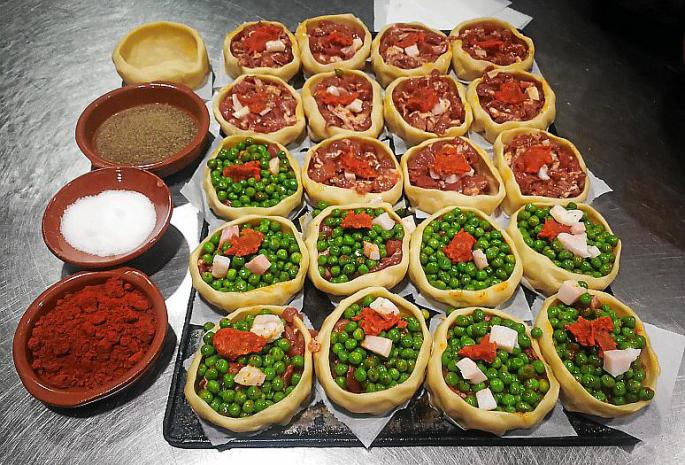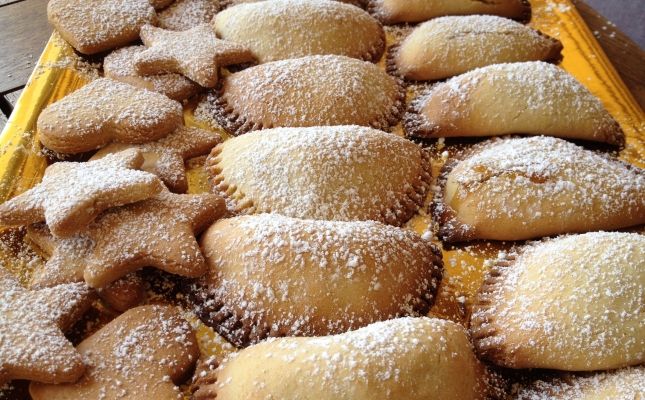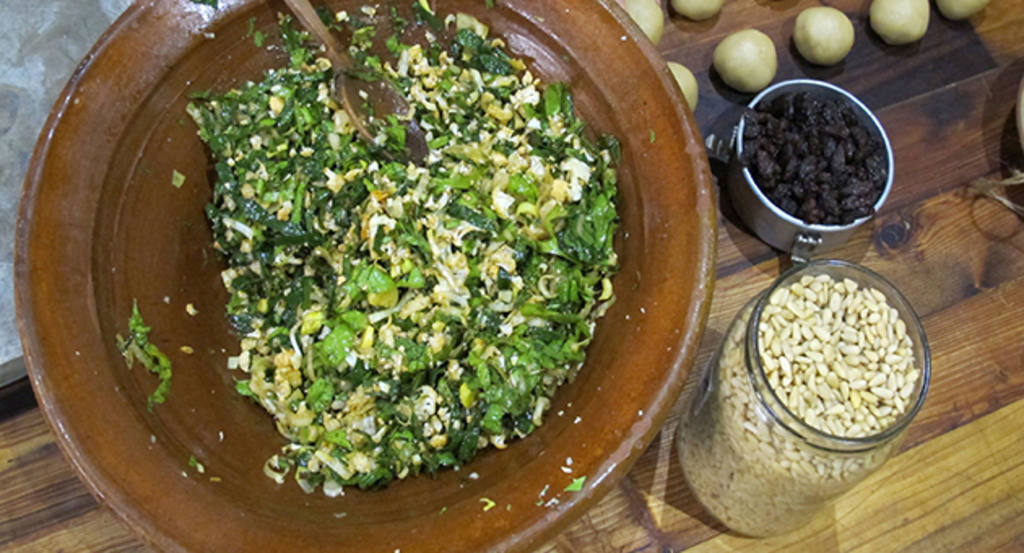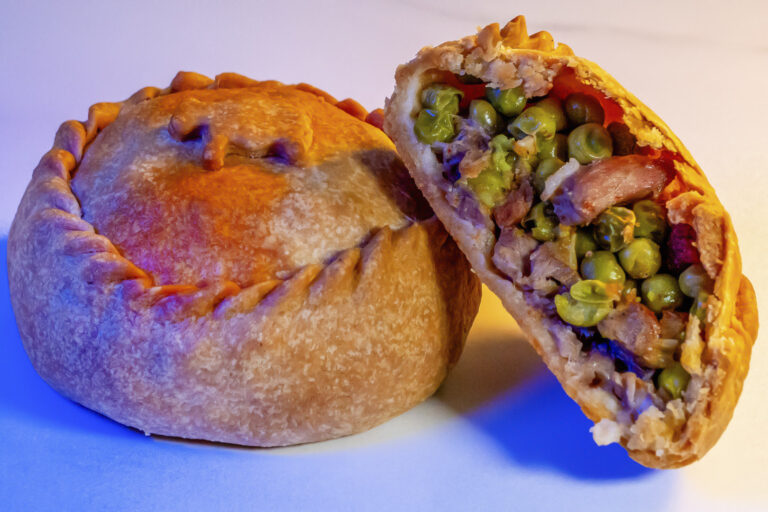Easter Week in Mallorca is not only experienced in the streets with solemn processions and emotionally charged silences. It’s also deeply felt in the kitchens, where entire families come together to prepare recipes passed down from generation to generation. It’s a time of customs, traditions, family moments and—let’s not forget—a time to eat. A lot. Who doesn’t love a table full of food? We sure do.
During these days, Mallorcan homes are filled with intense aromas and flavors that connect us to our roots: olive oil, lamb, sobrasada, anise, almonds, lemon… But if we had to choose one dish, one recipe, one set of flavors that truly represents these festive days, Mallorcan empanadas, known as ‘PANADES’, would be the clear winner.
Today we invite you to discover some of the most iconic dishes of this season and, as a treat, we’re sharing a traditional recipe so you can make it wherever you are. There’s something for everyone: sweet tooths, savory lovers… No one’s left out. And yes, there’s always a top 5 of dishes that end up winning everyone over. Here’s a selection:
Panades (Mallorcan Empanadas)
The star dish. Traditionally made on Holy Thursday, and every home has its own version. The classic ones are filled with lamb or pork, though you’ll also find fish or veggie versions. They’re usually eaten cold—and they’re even better the next day. Our recommendation? Go for the meat and pea combo (yes, you read that right… peas), and if you like a little spice, all the better.

Crespells and Robiols
Typical sweets for this time of year, especially loved by kids. Well, and by not-so-little ones too. Robiols are like colors—well, their fillings are. There’s something for everyone, from traditional jam fillings to more “innovative” ones like chocolate. Each family tweaks the recipe to their own taste. The key is to enjoy making them (it’s a perfect plan for the school holidays) and, of course, eating them.

- Crespells: Fun-shaped cookies (flowers, stars, hearts) made with oil, sugar, and orange juice.
- Robiols: Sweet turnovers filled with ricotta, cabello de ángel (pumpkin jam), or jam.
Cocarrois
This one’s like cilantro: you either love it or you don’t want it anywhere near you. If you’re not a fan of vegetables, this might not be for you. Though they can be eaten all year round, many families include them in their Easter menus. Cocarrois are similar to panades, but filled with vegetables (like chard, raisins, pine nuts, onion…).
That said, we just want to say—a tray of these typical goodies is always a hit. Mix sweet and savory and everyone’s happy. There’s something for every taste. BON PROFIT!

Example of a cocarrois filling.
LET’S GET TO WORK! Or better yet… HANDS IN THE DOUGH!
Now that we’ve shown you some typical dishes and probably made you drool a bit, it’s time to dive into the recipe for Panades. You can make it alone, with friends, or with family. The important thing is to enjoy the process and not get discouraged if it doesn’t turn out picture-perfect the first time. That’s not what matters. Trust the process, have fun, laugh a lot and—of course—enjoy the flavor.
Mallorcan Panades with Meat and Peas
(Traditional recipe. Yields approx. 10–12 units)
Ingredients
For the dough:
- 1 cup of mild olive oil
- 1 cup of water
- 100 g of lard
- Flour (as much as it takes, approx. 800 g)
- A pinch of salt
For the filling:
- 500 g of lean pork, cut into small cubes
- 150 g of fresh or frozen peas
- 1 tsp of sweet paprika
- Salt and pepper to taste
- 2 tbsp of olive oil
- (Optional: a small piece of sobrasada or pancetta in each empanada)
Let’s go step by step:
1. Prepare the dough:
In a large bowl, mix the oil, water, melted lard, and salt. Gradually add the flour until you get a smooth dough that doesn’t stick to your hands. Let it rest covered for 30 minutes.
2. Prepare the filling:
In a bowl, mix the meat with the peas. Add salt, pepper, paprika, and oil. Mix well.
3. Shape the panades:
Make dough balls and shape them with your fingers into little cups with raised edges. Fill them with the meat and pea mixture. Cover with a lid of dough and seal the edges with a pinch-twist fold.
4. Bake:
Preheat the oven to 180 °C (350 °F). Place the panades on a baking sheet lined with parchment paper and bake for about 45–50 minutes, or until golden brown.
That’s the process! The most important rule now is to enjoy them, and maybe save a few for tomorrow (or the day after). Basically—don’t eat all 12 in one sitting, or you’ll probably end up with a stomachache.
It’s been a pleasure cooking with you. See you in the next post?





